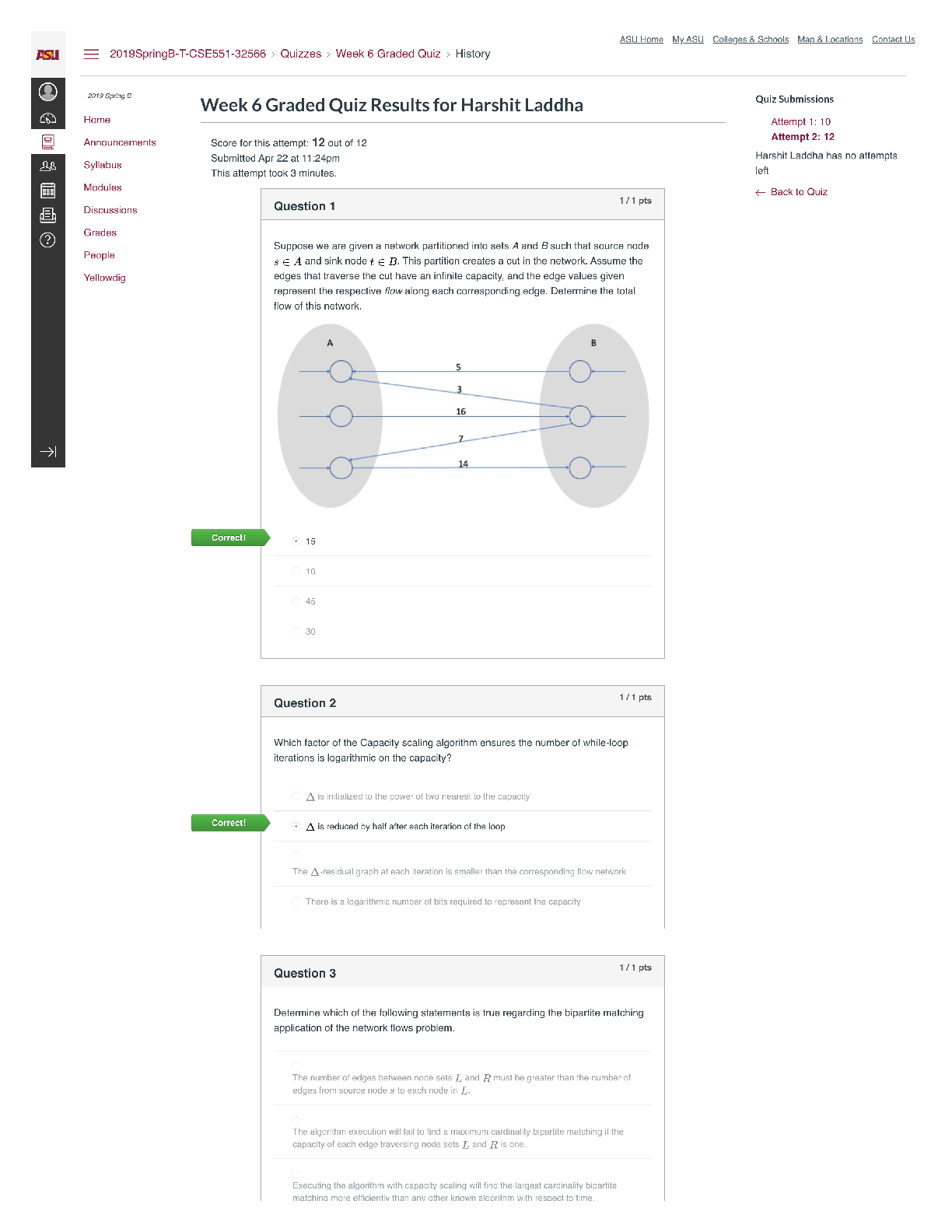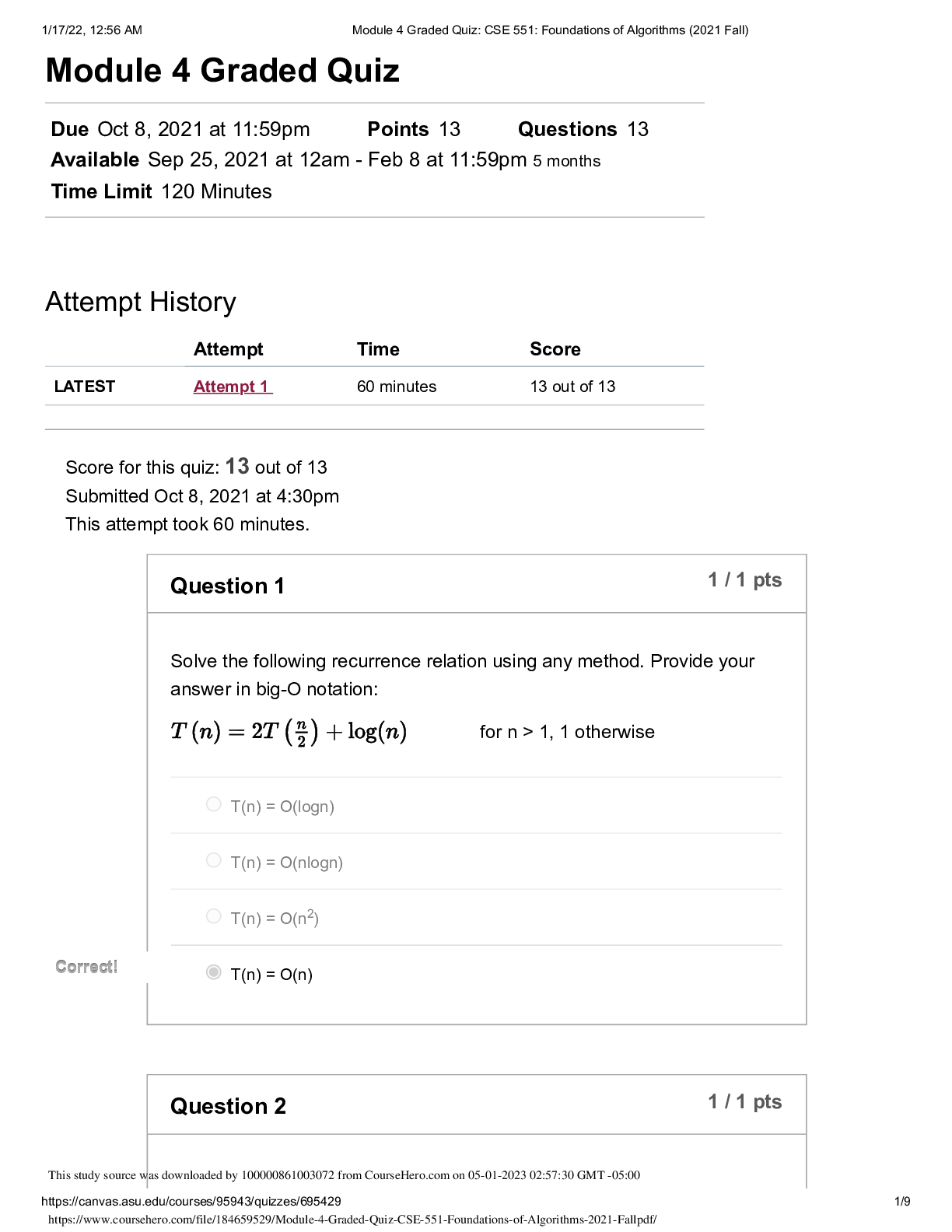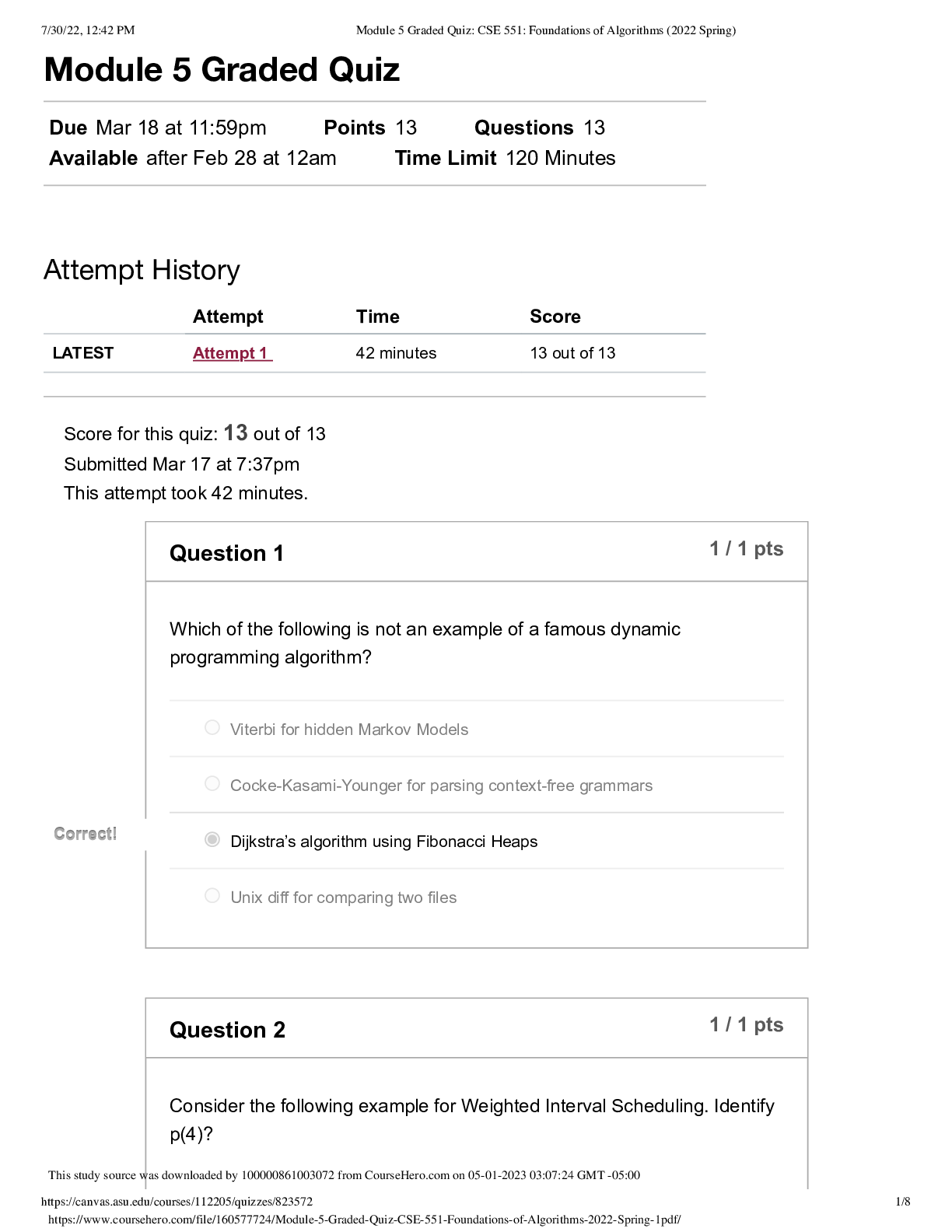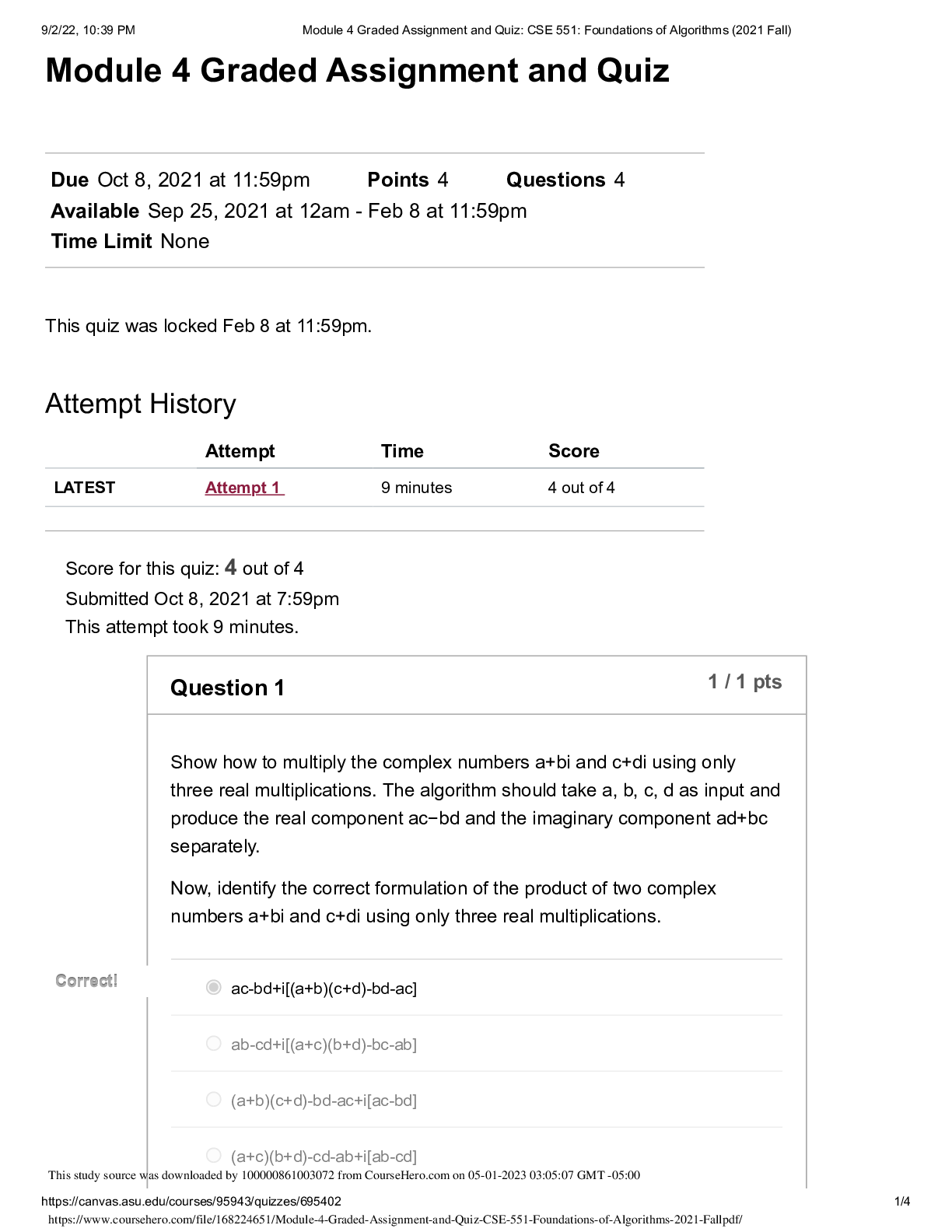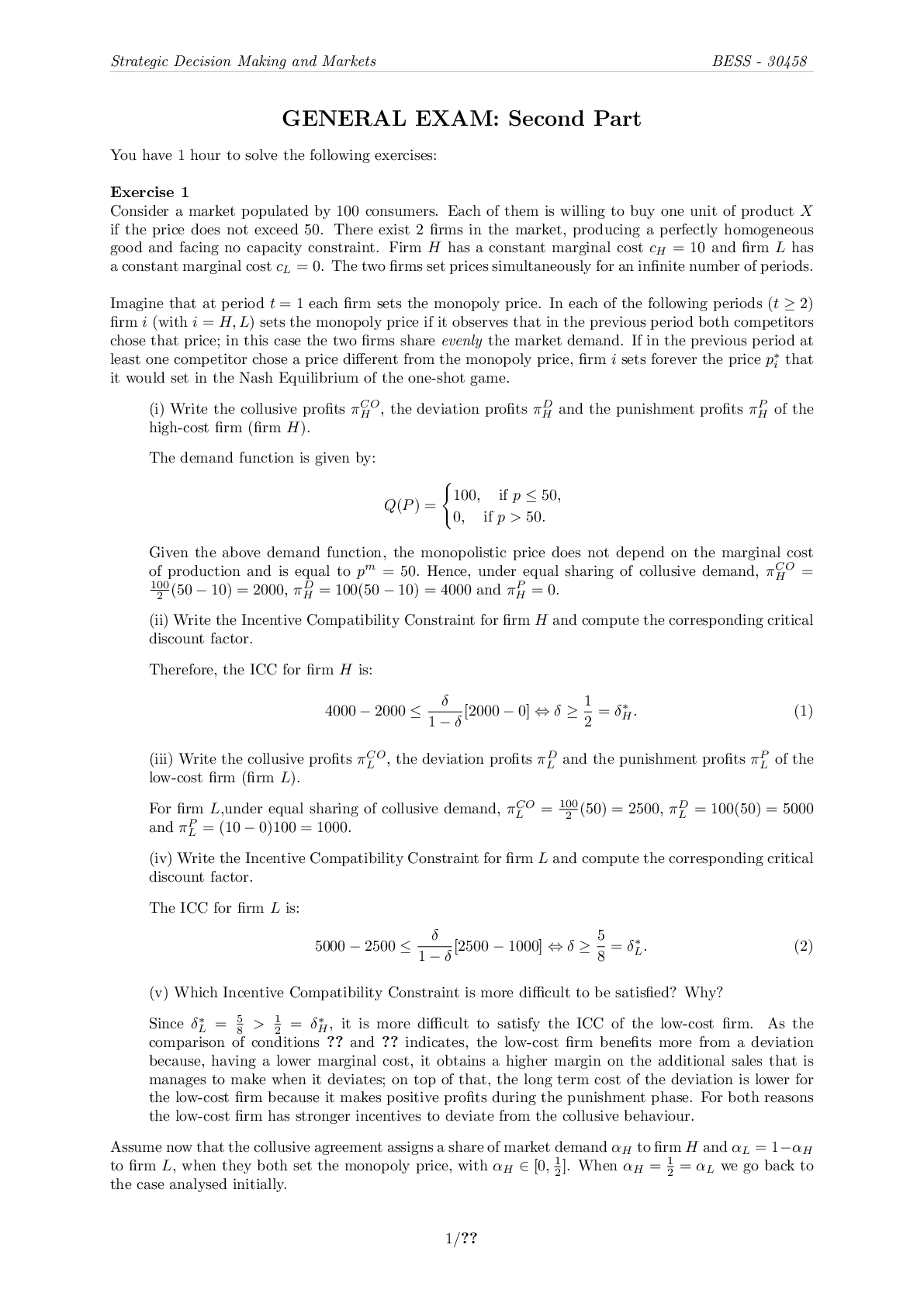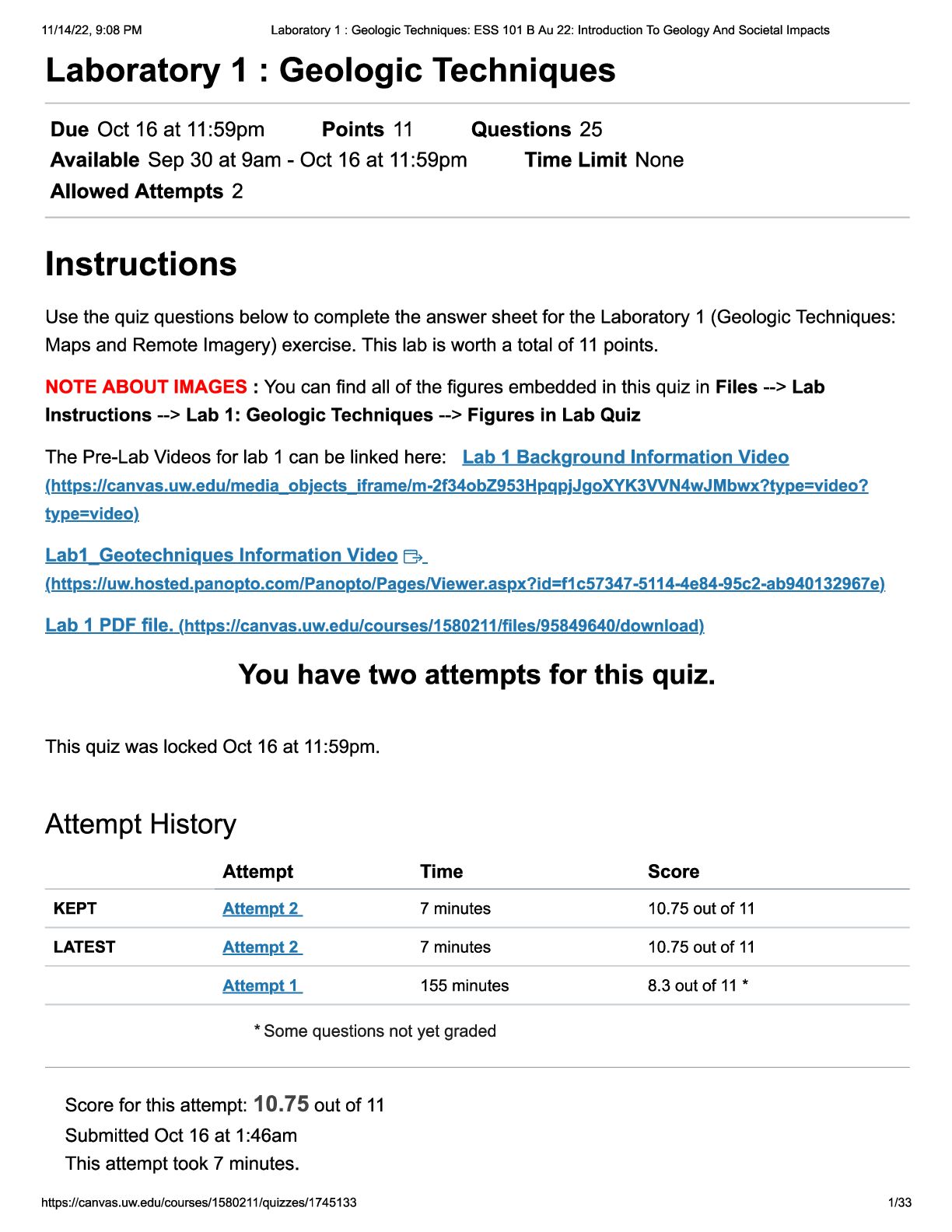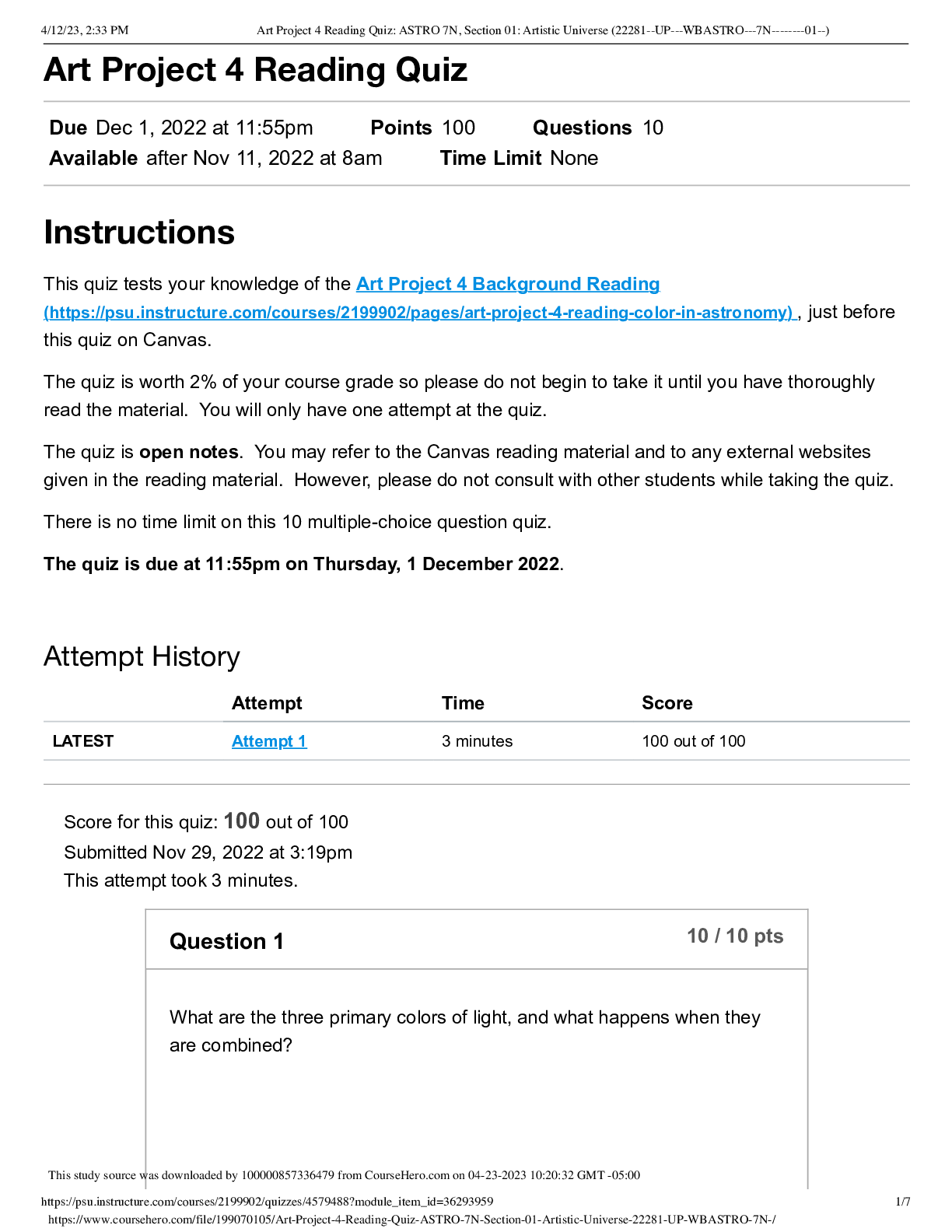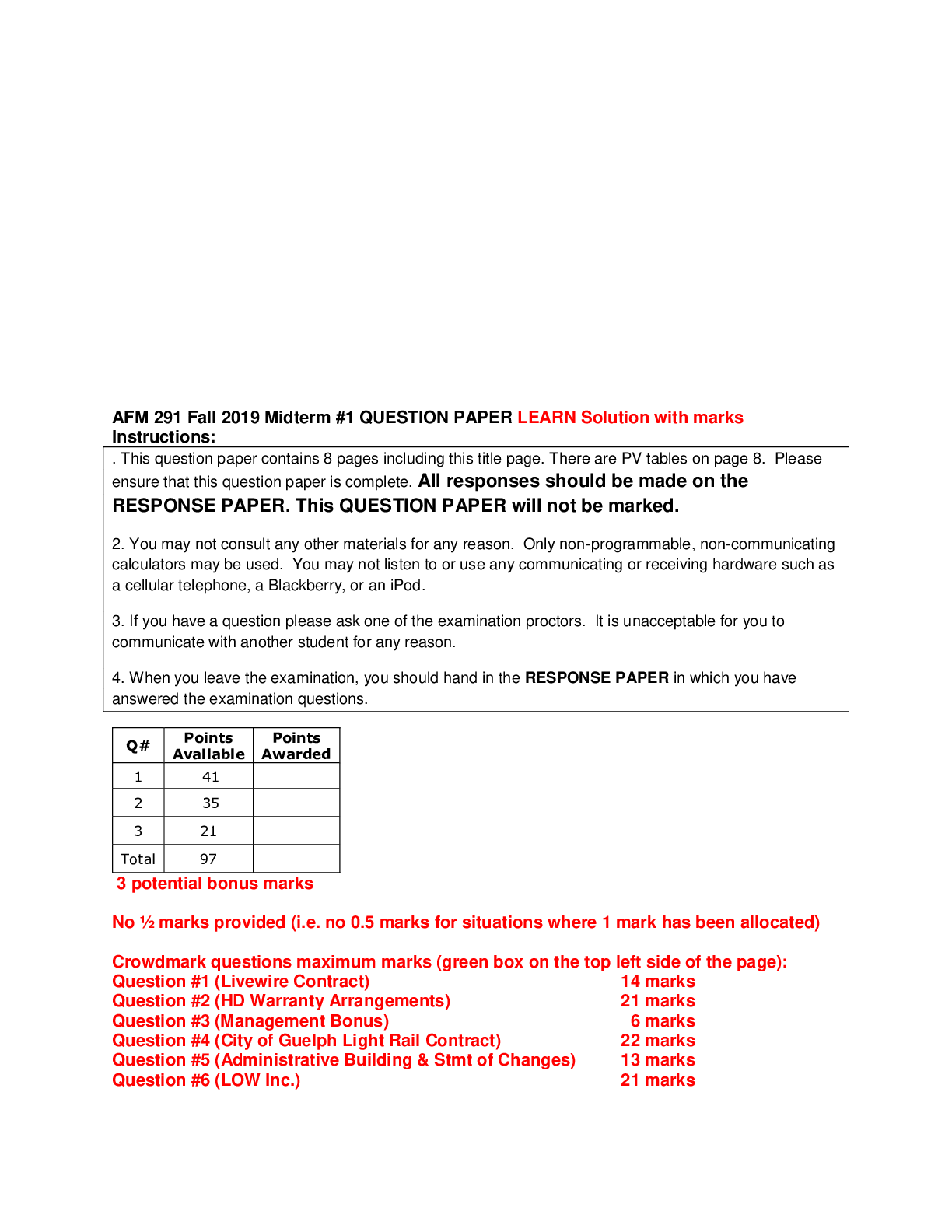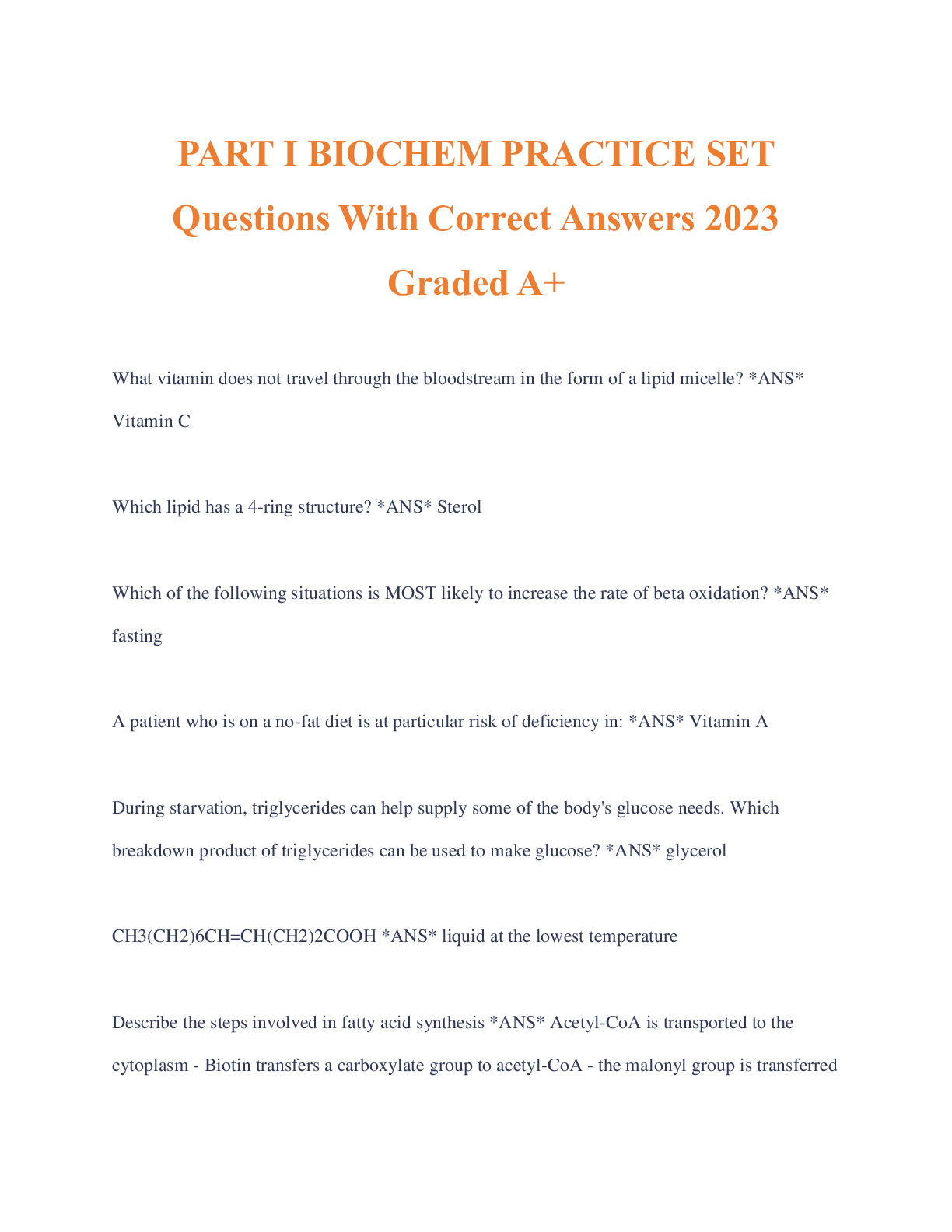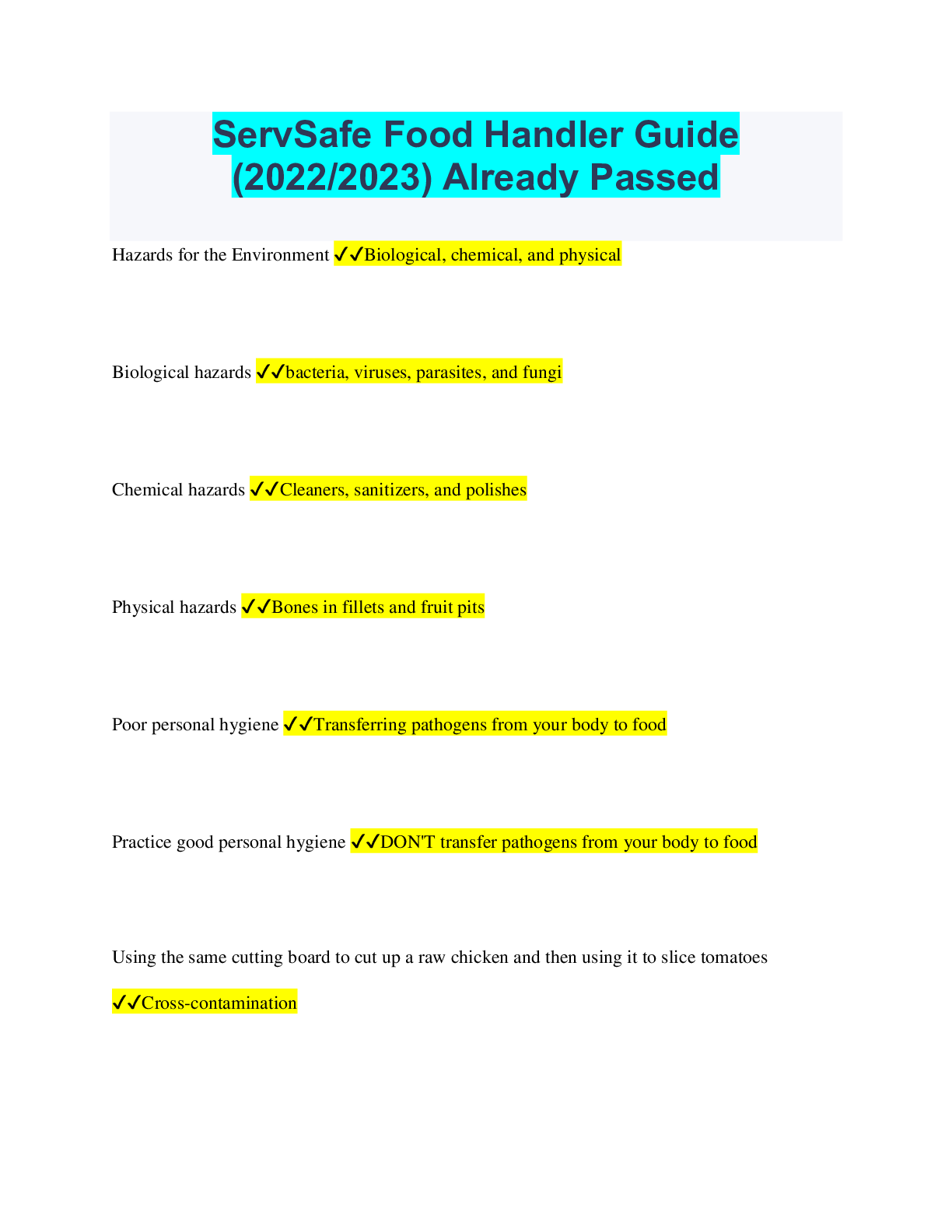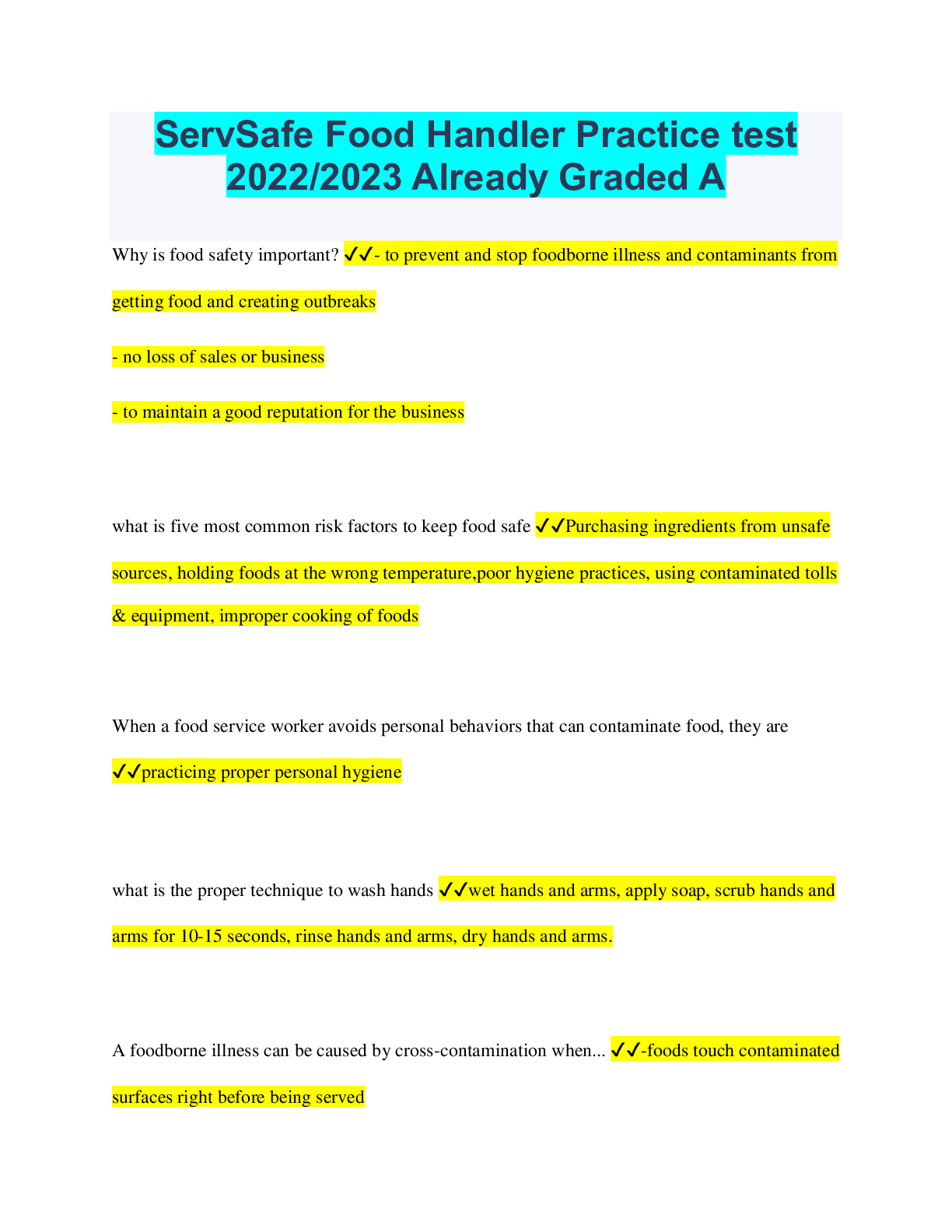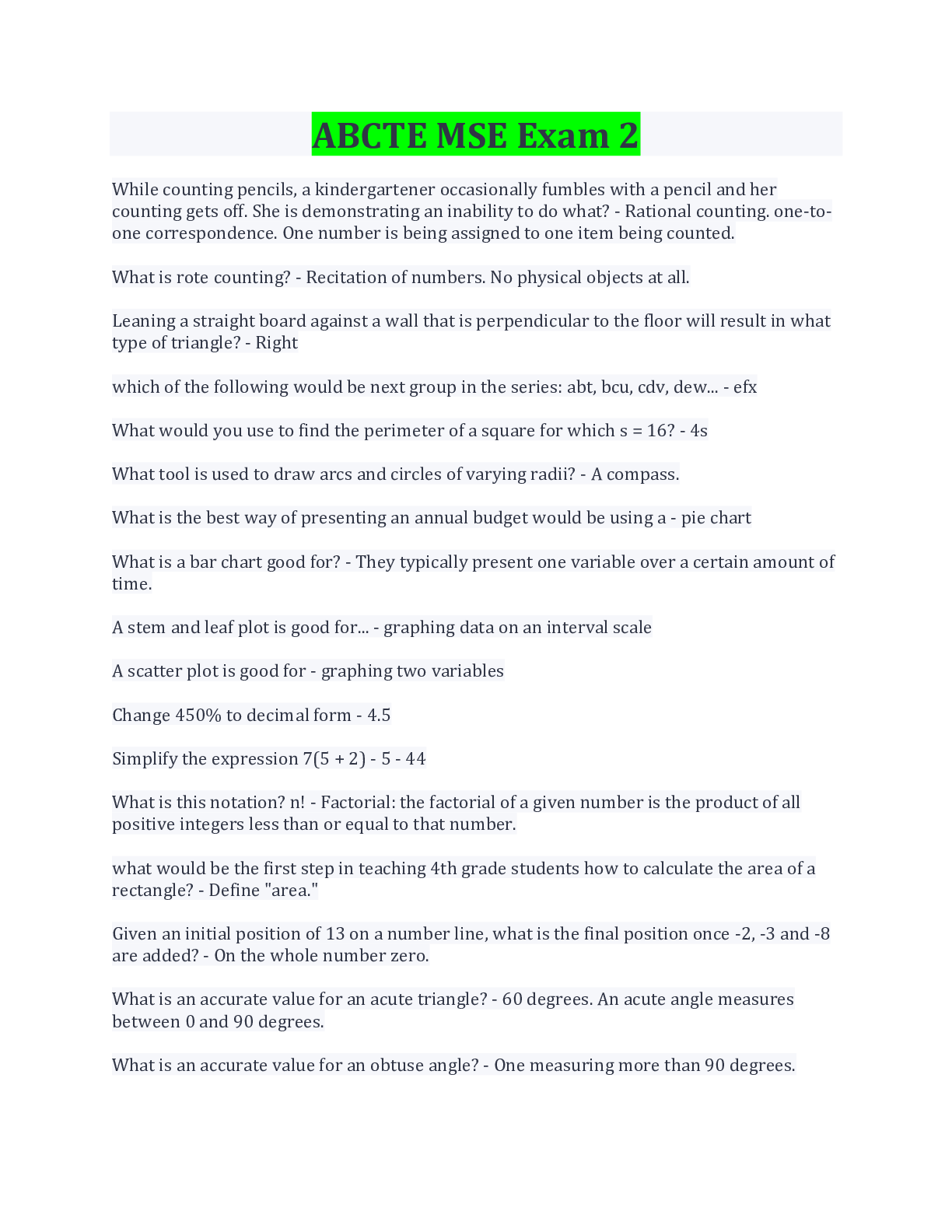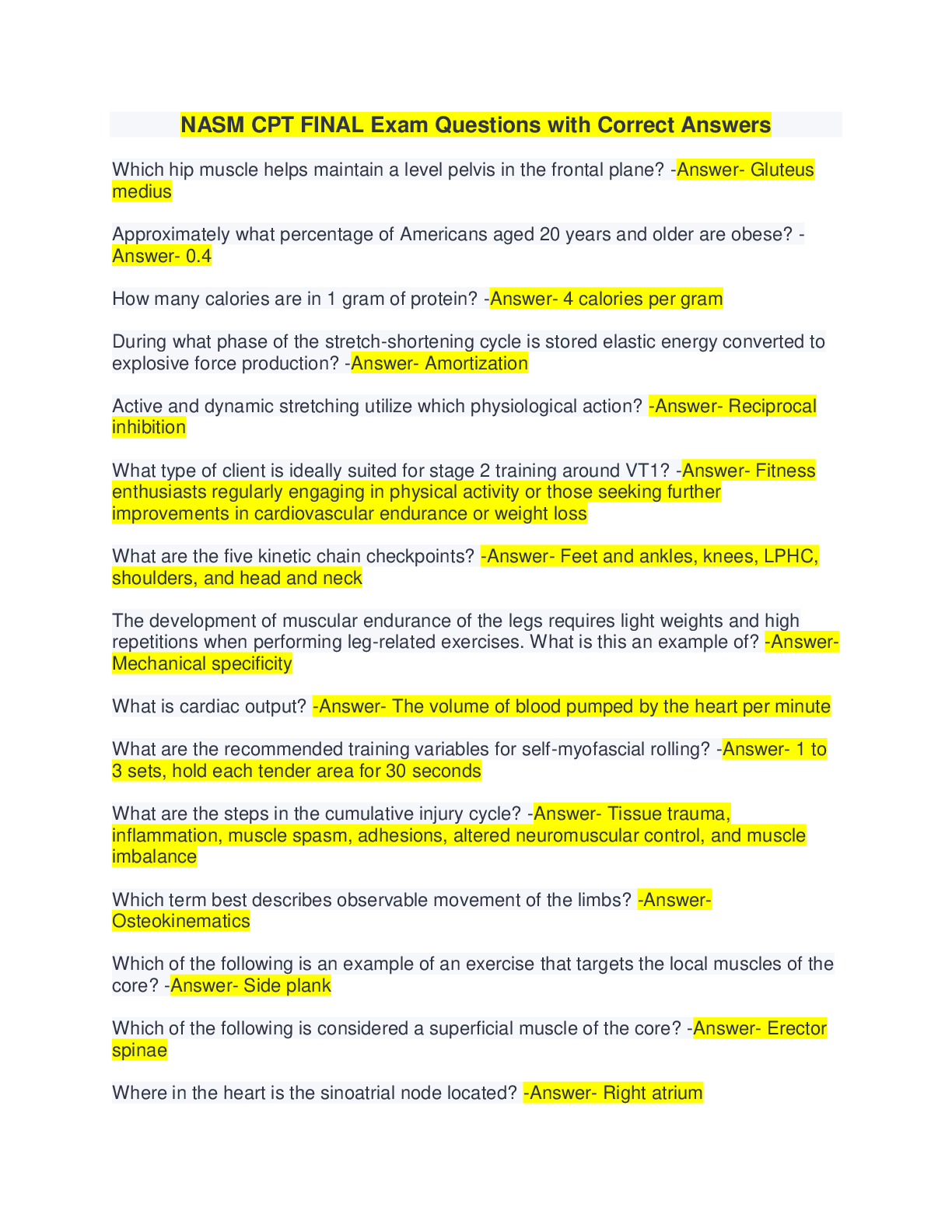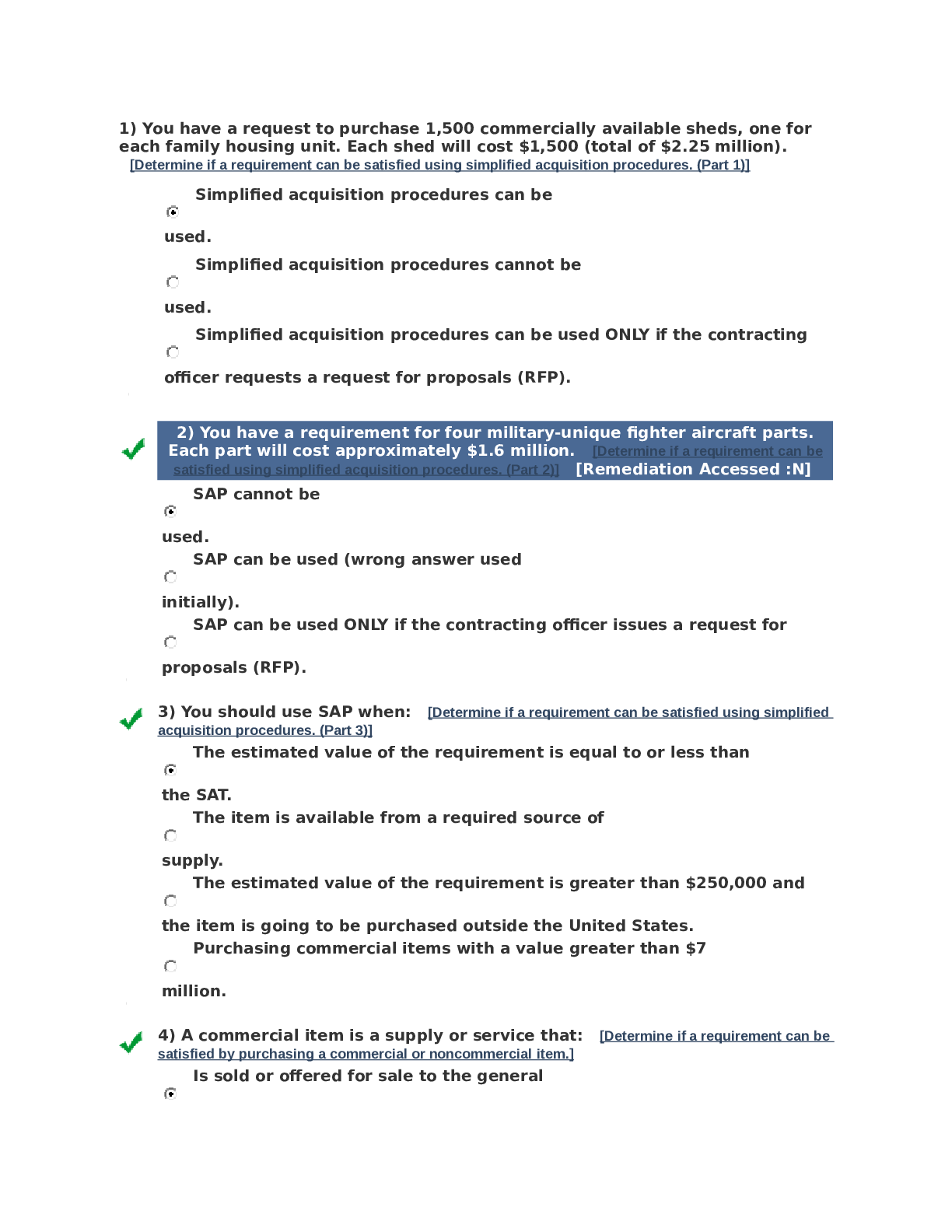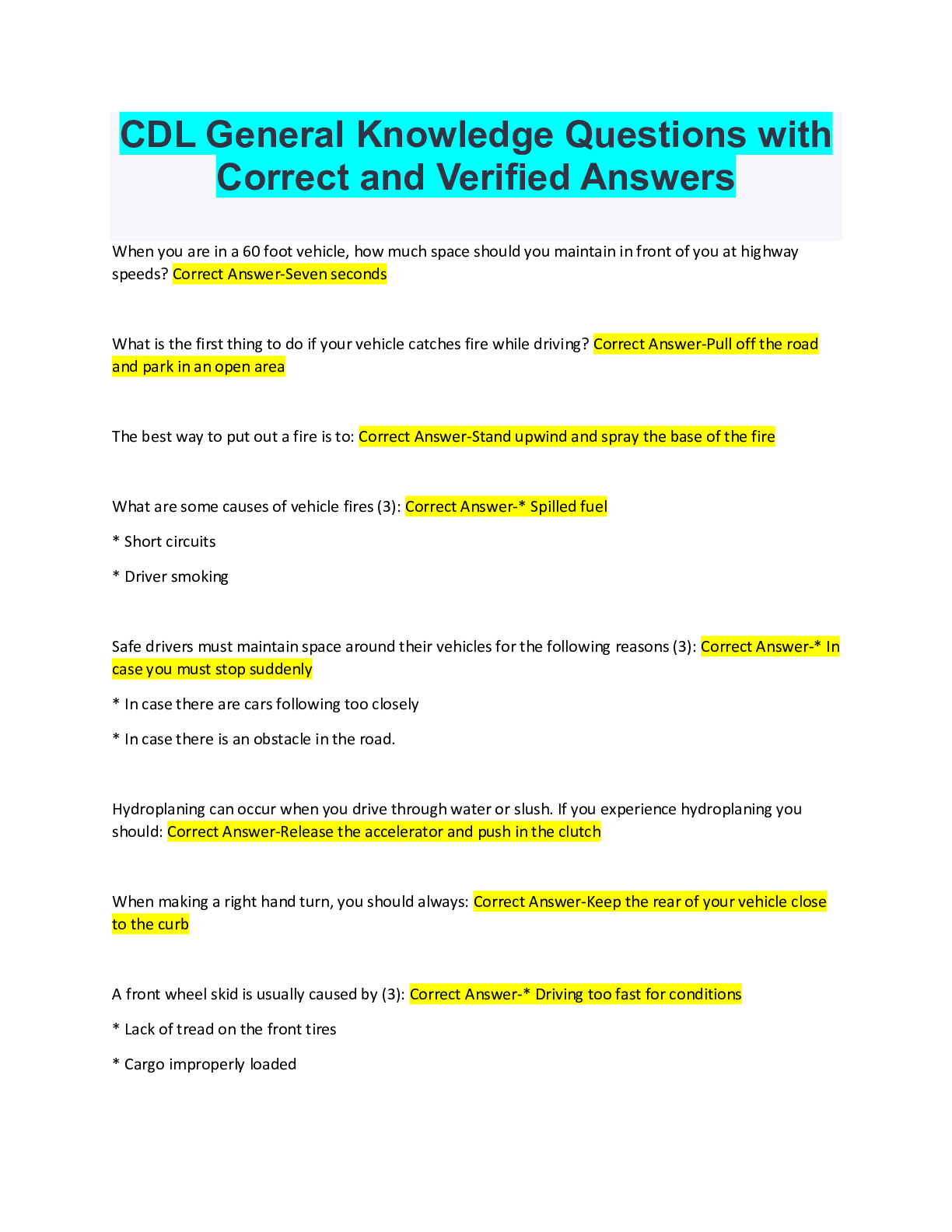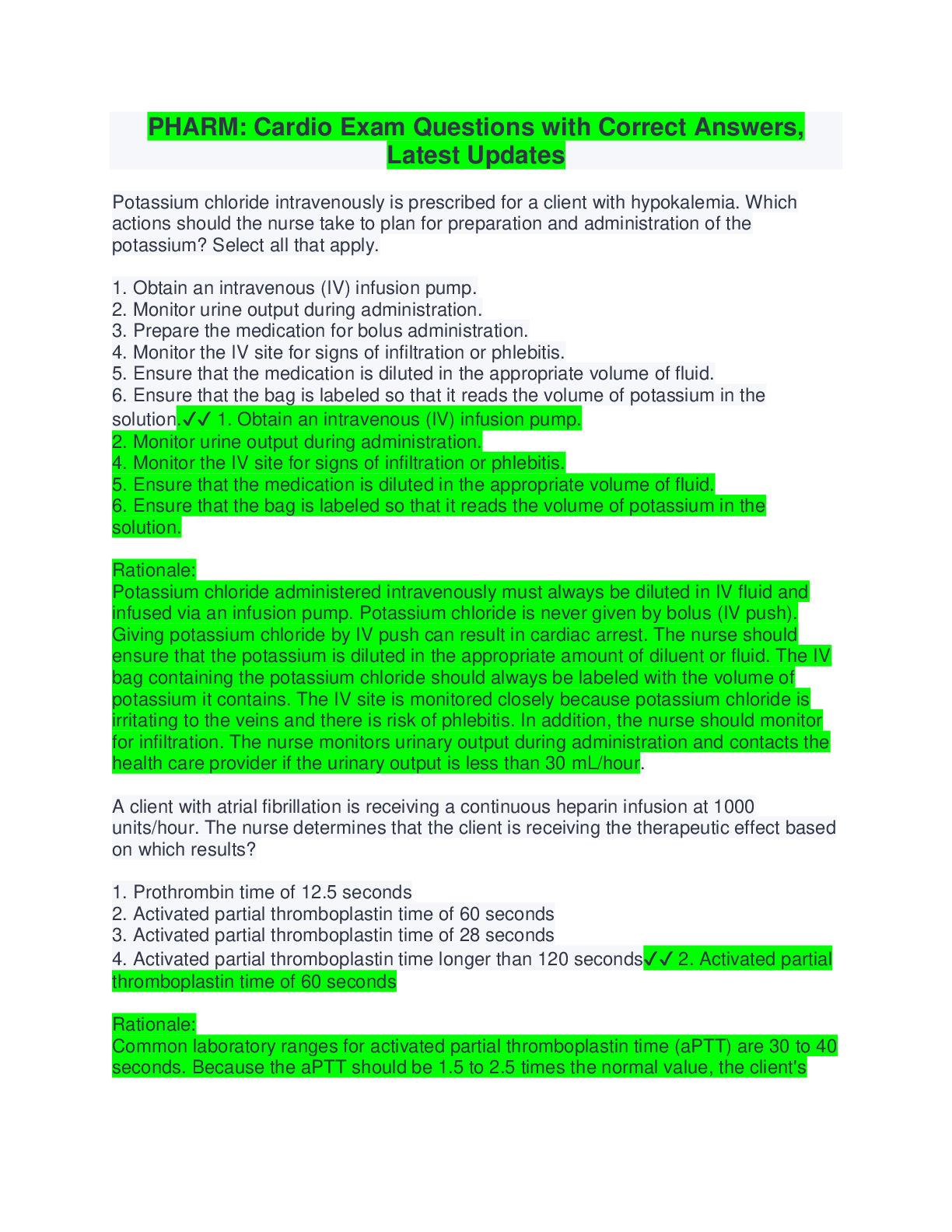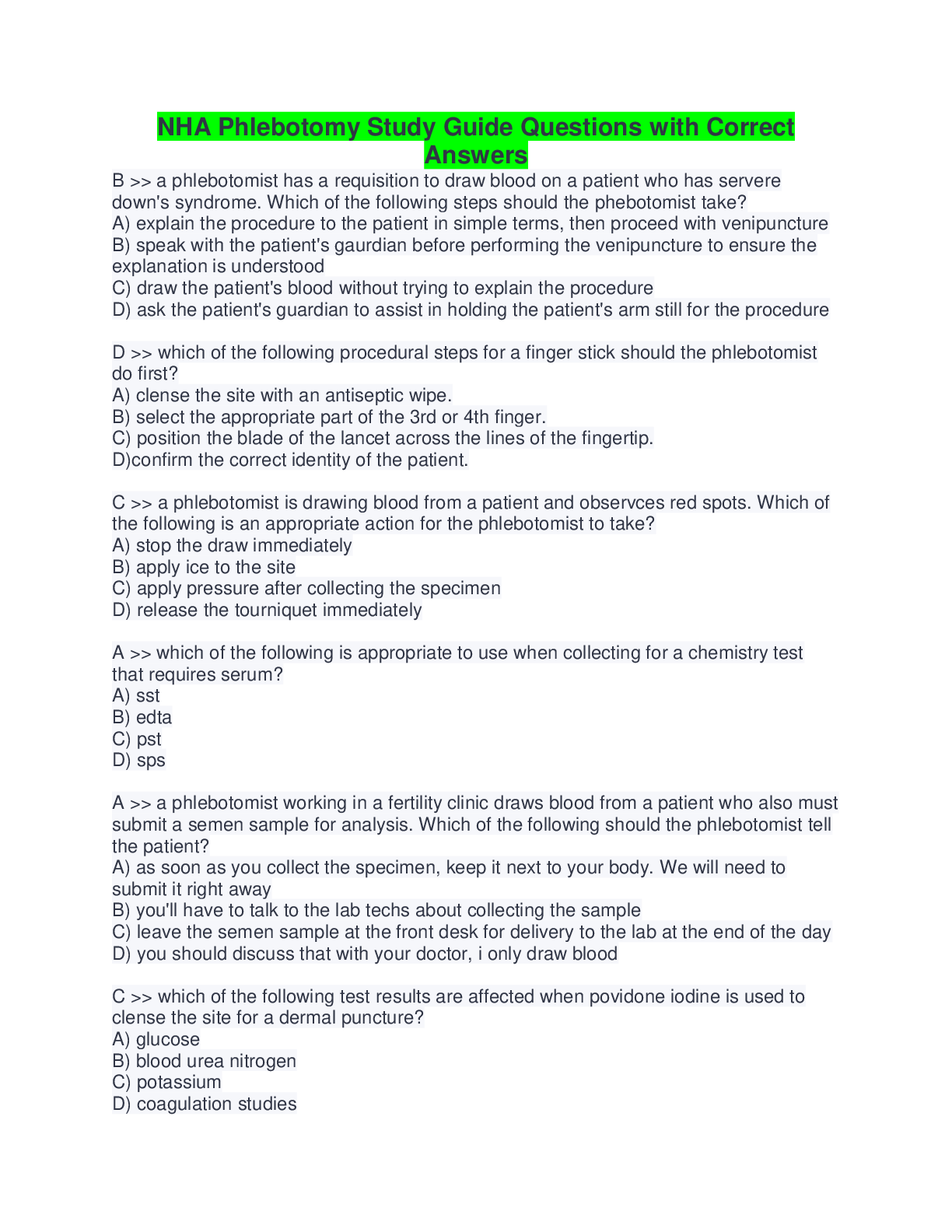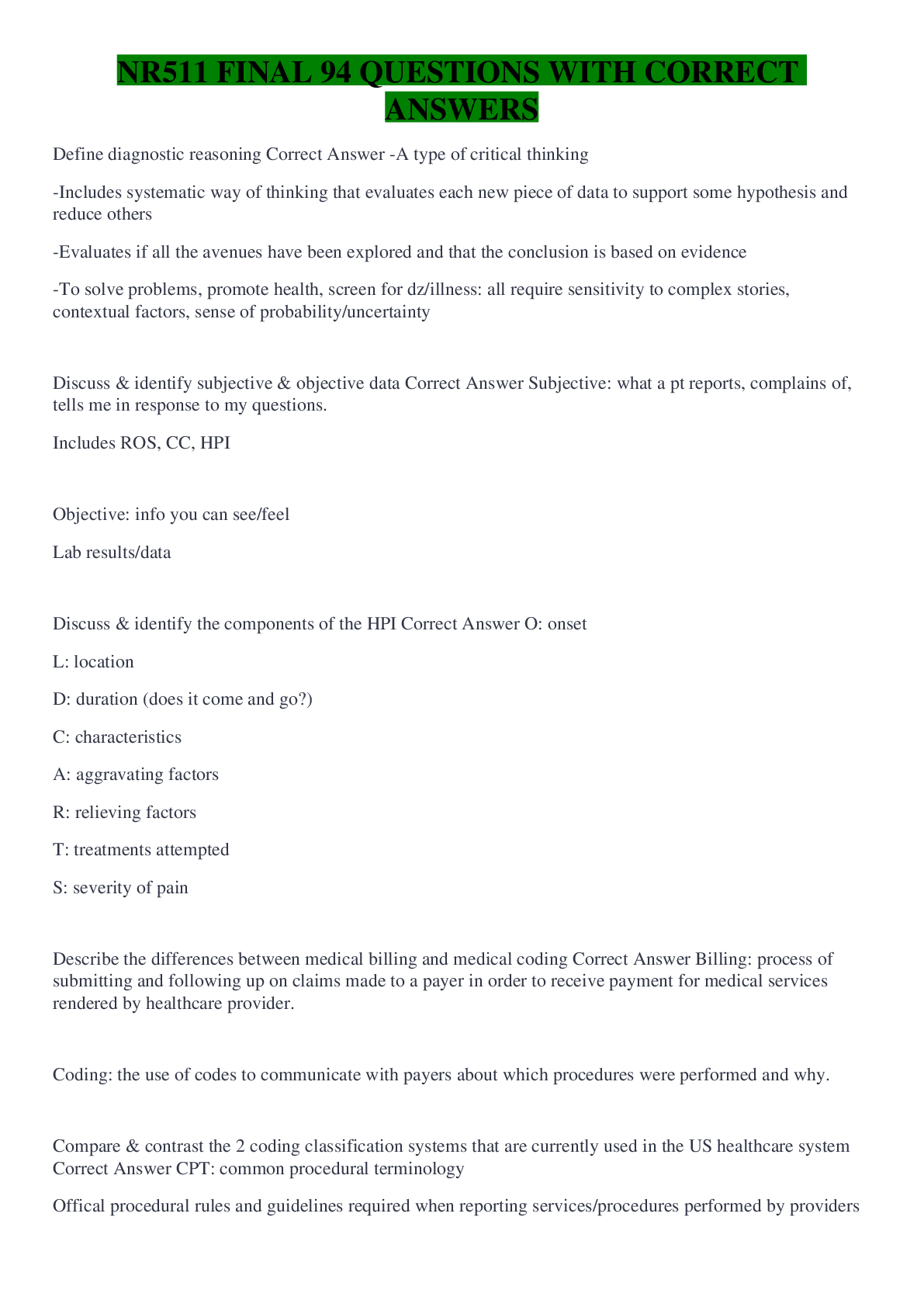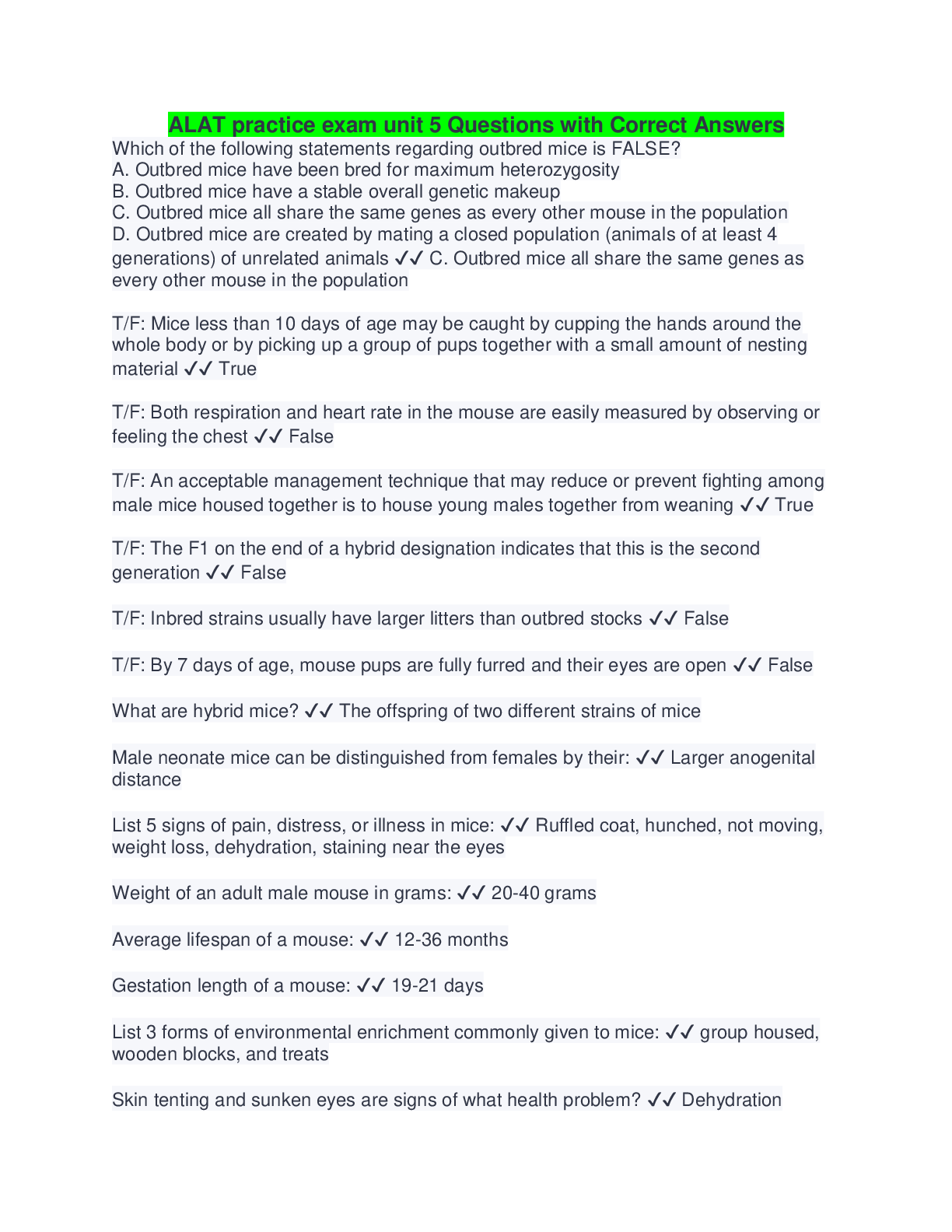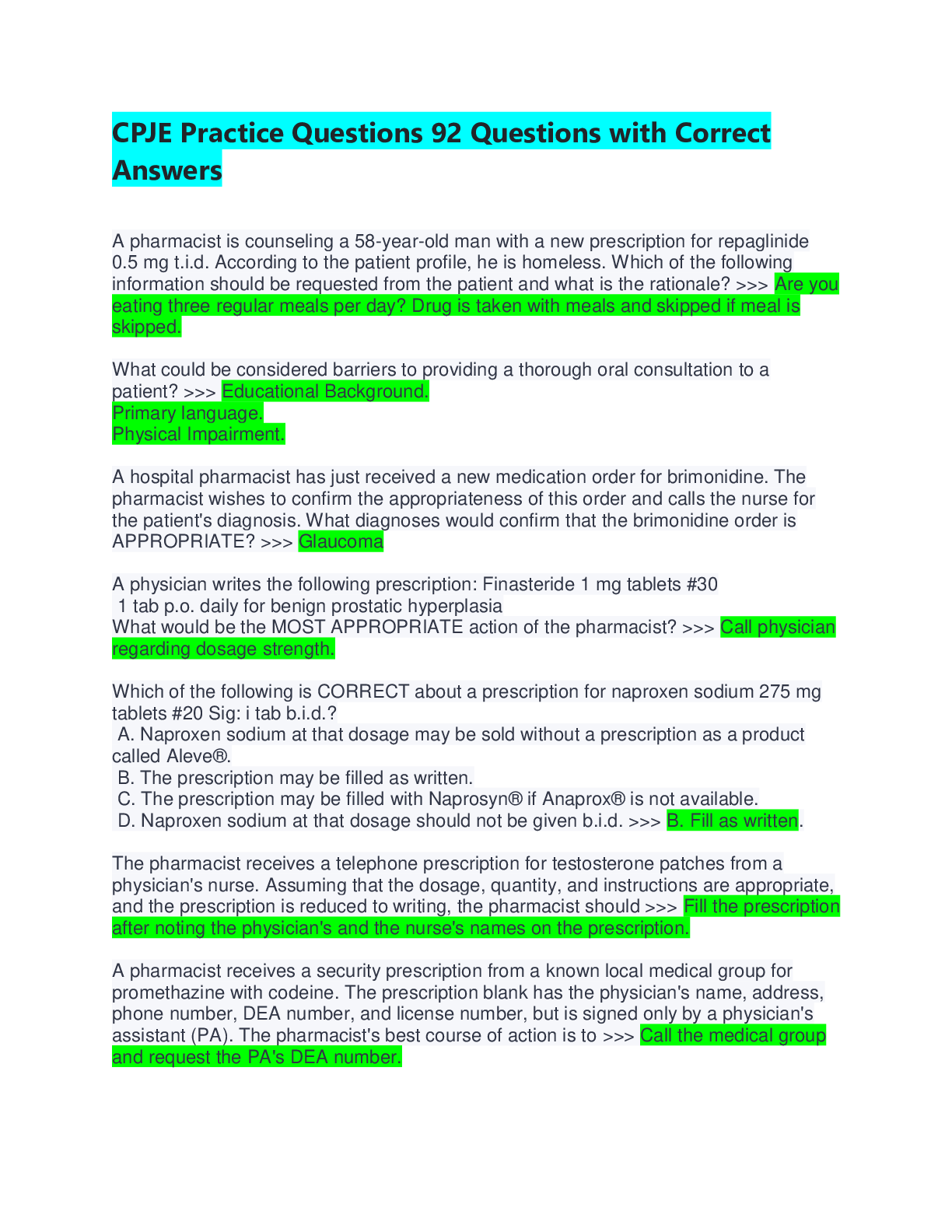Art > QUESTIONS & ANSWERS > ARTS and Mass communication. Cave Art Egyptian Art. MIDTERM EXAMINATION ART APPRECIATION, Contains 1 (All)
ARTS and Mass communication. Cave Art Egyptian Art. MIDTERM EXAMINATION ART APPRECIATION, Contains 160 Questions with Correct Answers Highlighted.
Document Content and Description Below
ARTS and Mass communication. Cave Art Egyptian Art. MIDTERM EXAMINATION ART APPRECIATION 1. The ___________ is a literary piece from the latter period of the New Kingdom of Egypt (1570-1069 BCE) in w... hich a young scribe prays for inspiration to a deity A. Prayer to Thoth for Skill in writing C. Prayer to Hathor for skill in war B. Prayer to Amun-ra for beauty D. Prayer to Ra for skill in reading 2. It is a simplified form of hieroglyphics used for administrative and business purposes, as well as for literary, scientific and religious texts. A. Hieroglyphics C. Demotic B. Hieratic D. Coptic 3. It is a Greek word language which means ‘popular script’, was in general use for the daily communication. A. Hieroglyphics C. Hieratic B. Demotic D. Coptic 4. _________ is a Greek writing adopted by Egyptians 450 CE. A. Hieroglyphics C. Hieratic B. Demotic D. Coptic 5. He was the son of Shu ‘the god of air’ and Tefnut ‘the goddess of moisture’, and had an important role in the Book of the Dead as the one who weighs the heart of the dead in the Judgment Hall of Osiris. A. Sekhmet C. Ra B. Geb D. Hathor 6. She was the Goddess of Motherhood in Egypt. Sometimes called the Mistress of the West, Hathor welcomed the dead into the next life. A. Sekhmet C. Ra B. Geb D. Hathor 7. He was known for mummifying the dead and guiding their souls towards the afterlife. His skin was black, symbolizing the dark Nile deposits which made the land so fertile. A. Anubis C. Osiris B. Mut D. Amun-Ra 8. ______ is a primal deity who wears two crowns on her head, each representing Upper and Lower Egypt. A. Anubis C. Osiris B. Mut D. Amun-Ra 9. It contained spells to help the dead back to life after the journey to the underworld. A, Book of the Living Wall Painting C. Book of the Dead Wall Painting B. Book of the Egypt Wall Painting D. Book of the Fire Wall Painting 10.It contains images of the king’s chosen deity and success stories of his life as a pharaoh. A. Tomb Wall Painting C. Egyptian Mummification Wall Painting B. Egyptian Deities, Wall Painting D. Egyptian concept of afterlife, wall painting 11._________is a temple complex located in the city of Thebes, the ancient capital of Egypt during the time of the New Kingdom. A. Giza Temple C. Luxor Temple B. Isis Temple D. Kom Ombo Temple 12.A limestone statue of reclining sphinx. It depicts a mythical creature with the human body and a lion’s head. 73m long and 20m high. A. Great sphinx of Giza C. Nefertiti Bust B. Khufu Statuette D. Colossi of Memnon13.Two massive huge stone statues representing greatness of Pharaoh Amenhotep III and it meant to protect the temple from evil A. Great sphinx of Giza C. Nefertiti Bust B. Khufu Statuette D. Colossi of Memnon 14.An artifact founded by Sir Willian Matthew Flinders Petrie in 1903 at the Temple of Khentyamentiu, Abydos in Upper Egypt. A. Great sphinx of Giza C. Nefertiti Bust B. Khufu Statuette D. Colossi of Memnon 15.The major African art contains the Mesolithic art in animal & human engravings or paintings. It indicates Archaic Tradition. A. Tassili-n-Ajjer Rock Art C. The Swimming Reindeer B. Amur River Basin Pottery D. Hall of Bulls Cave 16.The paintings on cave walls represent the earliest surviving examples of the artistic expression of early people in France. A. Tassili-n-Ajjer Rock Art C. The Swimming Reindeer B. Amur River Basin Pottery D. Hall of Bulls Cave 17.Chinese ceramics from Late Paleolithic Culture A. Tassili-n-Ajjer Rock Art C. The Swimming Reindeer B. Amur River Basin Pottery D. Hall of Bulls Cave 18.Carving from the tip of a mammoth tusk of two swimming reindeer found in the cave of Montastruc, France A. Tassili-n-Ajjer Rock Art C. The Swimming Reindeer B. Amur River Basin Pottery D. Hall of Bulls Cave 19.Depiction of the Great Royal Wife of the Egyptian Pharaoh Akhenaten. This is regarded as one of the most copied works on ancient Egypt. A. Great sphinx of Giza C. Nefertiti Bust B. Khufu Statuette D. Colossi of Memnon 20.Weighed 20 tons, the statue was designed to show him as a beneficent ruler, a mighty warrior and a living god. It was erected in the Ramesseum, his mortuary temple, where the believers of Ramesses would continue for centuries. A. Pharaoh Ramesses III C. Pharaoh Ramesses II B. Pharaoh Tutankhamen D. Pharaoh Cleopatra [Show More]
Last updated: 1 year ago
Preview 1 out of 11 pages
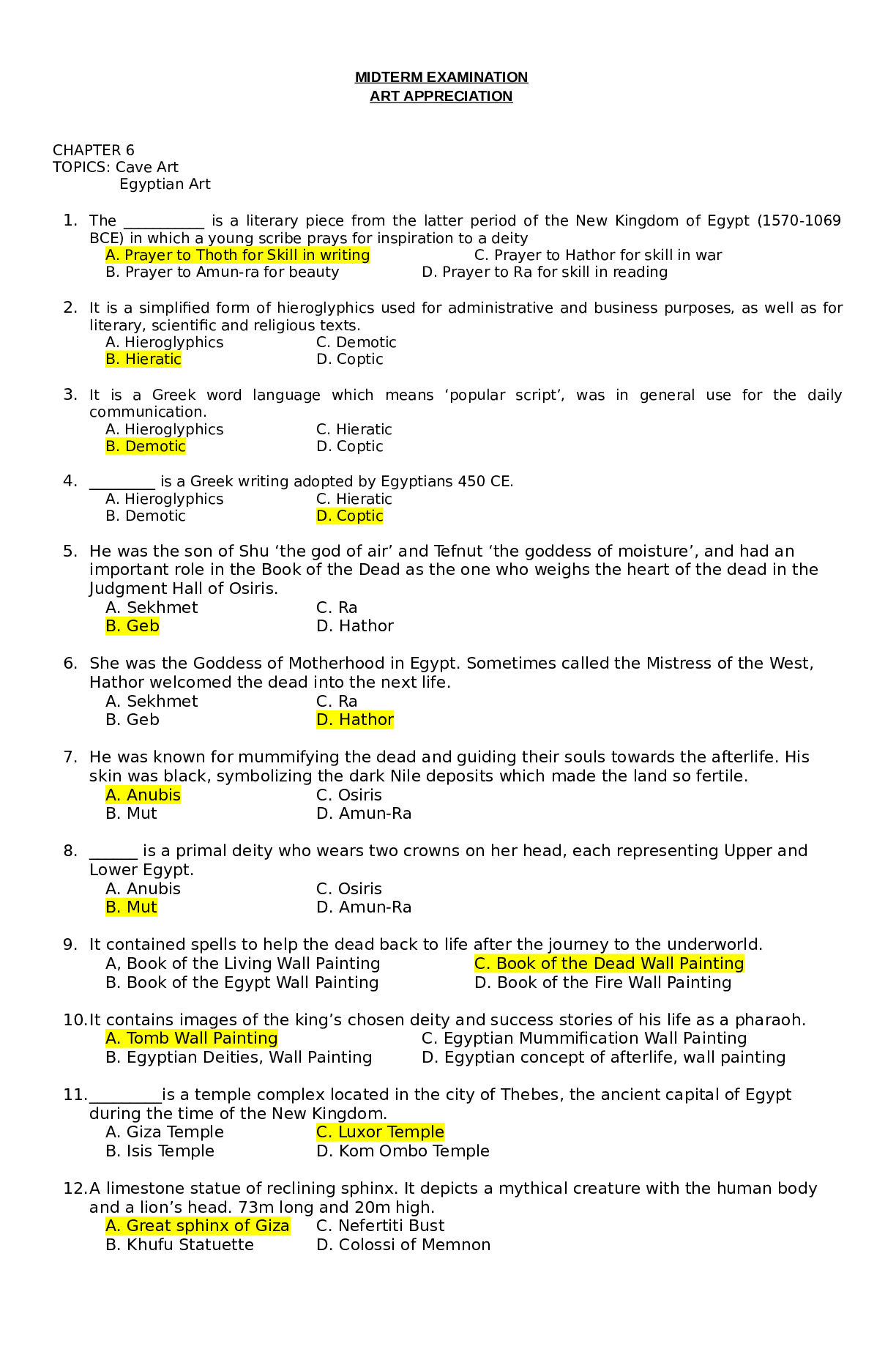
Reviews( 0 )
Document information
Connected school, study & course
About the document
Uploaded On
Apr 11, 2023
Number of pages
11
Written in
Additional information
This document has been written for:
Uploaded
Apr 11, 2023
Downloads
0
Views
90

